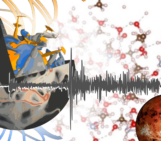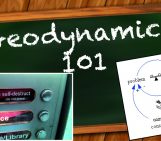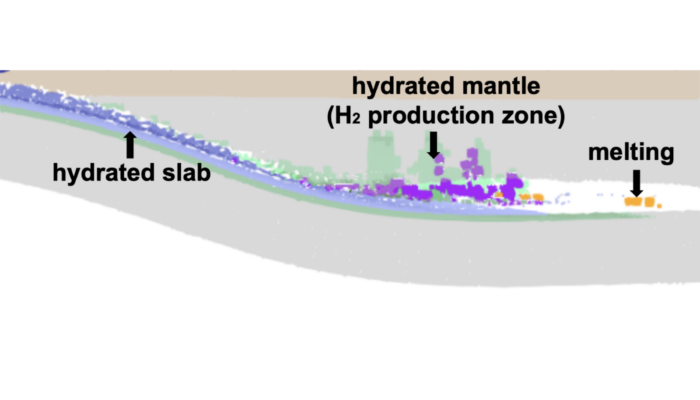
Dihydrogen (H2) is a promising source of energy that may allow reducing carbon emissions in industry and transportation. Artificial production methods have been explored, natural sources of H2 (also called white dihydrogen) offer a more eco-friendly and cost-effective production process. In this week’s blog post, Alexis Gauthier, a PhD student from ISTeP, France, is discussing the H2 production process in subduction zones within the mantle wedge.

Alexis is currently a PhD student at Sorbonne ISTeP since October 2023. The content of this blog is the result of his research for his master’s thesis at ISTeP.
Origin of H2 in subduction
The deep formation of H2 in subduction zones is associated with slab dehydration. In a recent paper, Moretti et al. (2023) detected variation of H2 emanation function of the slab dip angle above the Nazca plate subduction. This observation led me to the topic of my master thesis research: using numerical simulations to understand the influence of subduction dynamics in H2 production associated with mantle wedge hydration. To do this, we have run flat and steep subduction scenarios constrained by Andesian data, varying parameters such as the velocity of the overriding plate or the initial amount of water in the slab, using the thermo-mechanical code pTatin2d (May et al., 2014). This was also my time to show off my coding skills (with the valuable help of Tiphaine Larvet and Laetitia Le Pourhiet !!), since the water transport needed to be implemented in the code!
The size of H2 production zone
According to our results, H2 production occurs between the trench and the arc (Figure 1). Flat subduction scenarios reveal a substantial enlargement of the H2 production zone compared to steep (normal) subduction, and expands over time. The H2 production zone can extend up to 500 km from the trench! The extent of this zone appears intricately tied to the velocity of the overriding plate within the context of flat subduction (Figure 2): a swifter overriding plate corresponds to an extended H2 production zone.
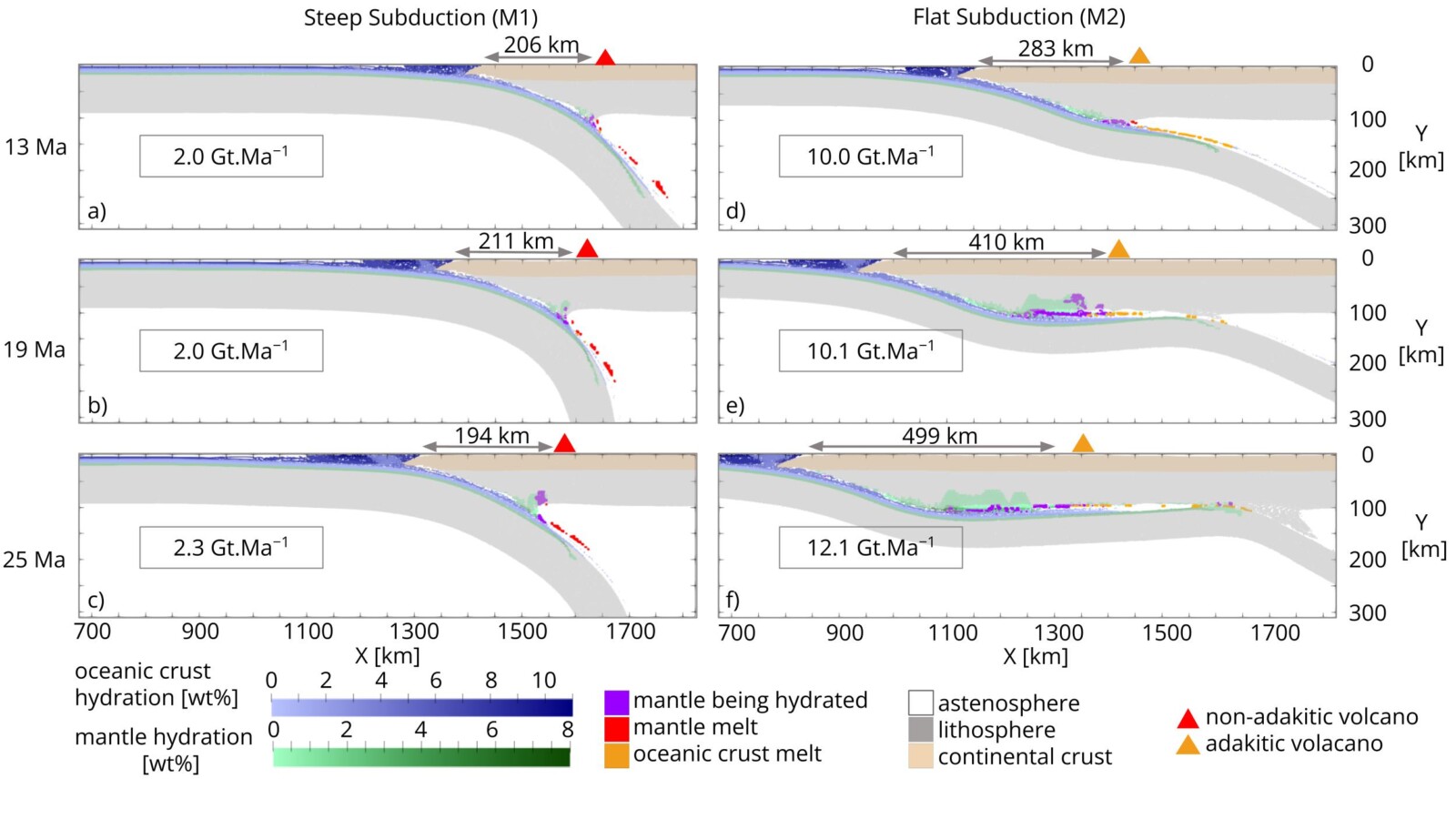
Figure 1: Steep vs. Flat subduction over time. The boxed value is the amount of water consumed in mantle hydration during the last time step (normalized to 1 Ma).
Quantity of H2 produced
We also highlight the competition between H2 production (mantle hydration) and melting. In steep (normal) subduction scenarios, a higher proportion of water is used in melting compared to flat subductions. This leads to an increased mantle hydration, consequently resulting in greater H2 production (5 times more!) in flat subduction. Additionally, in flat subduction context, the quantity of H2 generated exhibits a progressive increase over time, making flat subduction in an advanced state particularly appealing. Lastly, flat subductions with a slow overriding plate present a notable advantage for H2 exploitation, as the limitation of hydration zone extent increases H2 concentration.
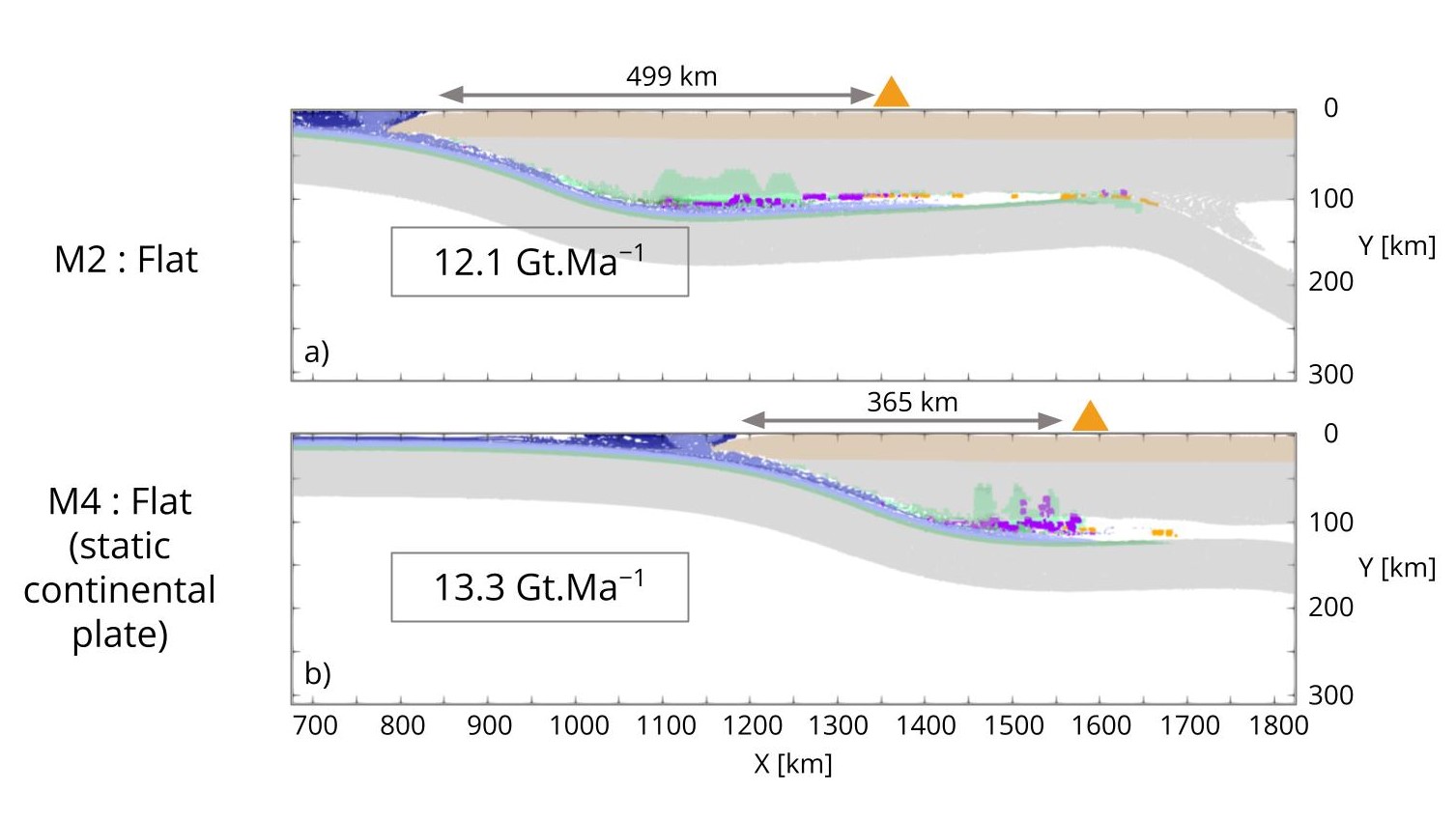
Figure 2: Investigation of the influence of the velocity of the overriding plate over time, after 25 Ma simulation. See Figure 1 for legend.
Volcanism in flat subduction
Through this study, we embarked on the first thermomechanical simulations incorporating (de)hydration and melting processes in flat subductions context. This approach allowed us to explore flat subduction volcanism in a novel manner. Our findings support observations in the literature (Litvak et al., 2007): from the initiation of flat subduction, we observe a landward migration of the volcanic arc, a widening of the melting zone, and a decrease in the amount of expelled lava, until the cessation of volcanism. Additionally, our simulations show that flat subduction geotherms trigger oceanic plate melting, which explains adakitic signature of volcanoes (increased La/Yb ratio for magma composition) in this context.
The content of this blogpost is submitted in the journal BSGF – Earth Sciences Bulletin: Hydrogen Production in Subduction Zone, by Alexis Gauthier, Tiphaine Larvet, Laetitia Le Pourhiet, and Isabelle Moretti.
References
Litvak, V. D., Poma, S., & Kay, S. M. (2007). Paleogene and Neogene magmatism in the Valle del Cura region : New perspective on the evolution of the Pampean flat slab, San Juan province, Argentina. Journal of South American Earth Sciences, 24(2‑4), 117‑137.
May, D. A., Brown, J., & Le Pourhiet, L. (2014). pTatin3D: High-performance methods for long-term lithospheric dynamics. SC’14: Proceedings of the International Conference for High Performance Computing, Networking, Storage and Analysis, 274‑284
Moretti, I., Baby, P., Alvarez Zapata, P., & Mendoza, R. V. (2023). Subduction and Hydrogen Release : The Case of Bolivian Altiplano. Geosciences, 13(4), 109.


